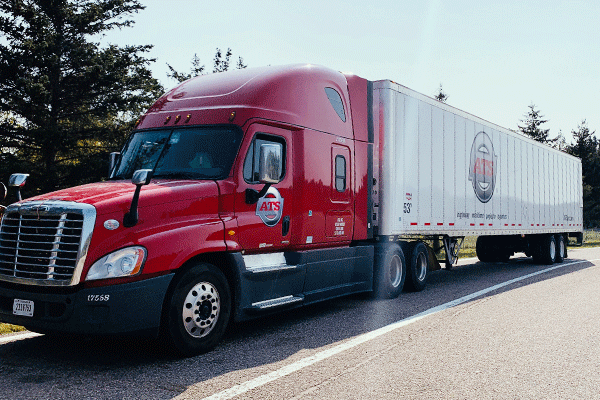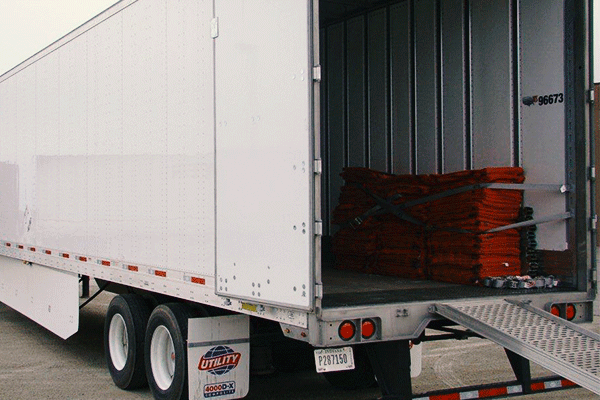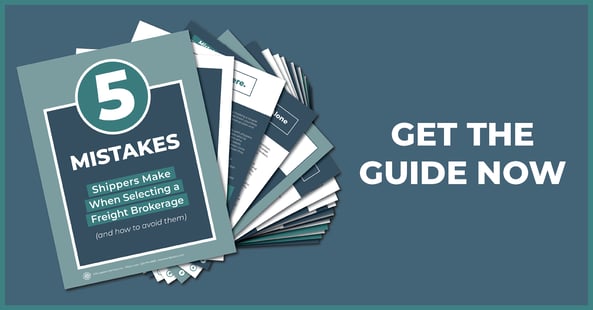
Why does moving freight always feel so daunting? Like there’s something you don’t know. Some secret ingredient you’re missing that you never seem to find. In recent memory, getting your LTL shipments delivered without a hitch has felt like a distant fantasy. Like it simply can’t be done. Not by you anyway.
Too many shippers feel this way and it’s not simply due to inexperience. No, even the most experienced logistics professionals find it difficult to move LTL freight efficiently and cost-effectively.
Sure, the transportation industry is fast-paced by its very nature and it’s not likely to change. But that doesn’t mean you can’t catch up.
Here at ATS, our demonstrated history of moving less-than-truckload goods extends well beyond the comfortable interior of our St. Cloud corporate office. Today, we’re looking to make our expertise yours and help you maximize your LTL transportation supply chain and budget.
Below, we’ve compiled a step-by-step guide to LTL shipping. This article will outline everything you’ll need to have in order at every step of this process.
The biggest six steps toward successful LTL shipping are:
- Prepare and package your freight.
- Get a quote
- Book your load
- Load and track your shipment.
- Note any damage on the bill of lading.
- Hold onto your bill of lading for record-keeping purposes.
Let’s talk about each of them.
Step 1: Prepare and Package Your Freight
When it comes to making the most of your less-than-truckload shipping budget, this step is the most crucial. Improperly packaging and preparing your freight for pickup can be detrimental to the final condition of your shipment.
LTL freight is subject to frequent handling during transit as new products are picked up and loaded throughout your truck’s journey. As such, the more you can do to mitigate your product’s risk for damage, the better off you’ll be in the end.
To do this, make sure to package your goods in a way that will protect them from jarring, bumping and crushing during their LTL journey.
In our experience, crating your product — where applicable — is the best way to ensure its safety during transit. A crate’s hard exterior — which you don’t get with cardboard boxing — will keep your cargo from taking damage during loading and offloading. And, provided you pad the interior of each crate your cargo’s potential for mishap will shrink substantially.
For palletized goods where crating simply isn’t an option, make sure to wrap your goods in a way that will keep them together and make them easier to load.
Additionally, be sure to place heavier items at the base of your pallets with lighter items on top — up to four feet high.
Doing so will help you cut down the total amount of time a driver spends handling your freight as they can quickly situate, and re-situate, your goods as needed.
How Should You Label Your LTL Freight?
Once your goods are neatly packaged in anticipation of transport, the next thing you’ll need to do is mark your freight with all appropriate labels and notations. LTL carriers have a lot of information on their plate. The most overbooked trucks can have a bunch of different products utilizing their trailer.
Each of these products has a different shipper, destination and set of handling instructions.
As you might imagine, it can be difficult for the truckers in charge of all of these moving parts to remember what’s required for each package. To ensure that nothing gets forgotten or mishandled during transportation, make sure to label your commodity with any special instructions you’d like to make plainly evident.
Labels like “This Side Up”, “Do Not Stack”, “Handle With Care”, and “Fragile” will help the individuals charged with handling your freight do so safely.

Step 2: Get a Quote
Once you have your freight packaged in a way that will make for smooth loading/unloading, promote its safe transportation and have it properly labeled, you’re ready to get a quote for your LTL shipment.
To get an accurate price — a price that will get the job done — it’s important that you include the following information when soliciting transportation providers for a truck:
- Your total product weight (including the weight of the pallet).
- The specific dimensions of your freight.
- Height
- Length
- Width
- Pallet count (if applicable)
- A specific description of what your commodity is. Include a photo of each loaded pallet if possible.
- All accessorial requirements of your freight.
- Lift-gate service
- White-glove services (pick-up/delivery)
- All Zip Codes and pick-up and drop locations.
- Preferred pick-up and delivery time frames.
Each tidbit of information you provide will help carriers ensure that your needs meet their capabilities. Only with all of the details can they understand your requirements and price your load accordingly.
That said, when it comes to moving freight of all kinds — LTL included — you should weigh multiple quotes at once. Sourcing quotes from multiple providers will allow you to select the rate of your choosing and avoid any outliers — whether they’re too high or too low.
Step 3: Book Your Load
The obvious next step in your LTL shipping journey is to book your shipment with the carrier you select.
As long as you’ve transparently communicated the specific dimensions of your freight, your expectations for pick-ups, drops and any LTL accessorial services you need, booking your load with confidence should come easily.
Be sure to pick a company with a demonstrated history of moving LTL freight, like yours, successfully. More importantly, pick a provider that communicates with you from the beginning.
You don’t want to end up working with a company that doesn’t have the resources to adequately service your load. Avoid this by communicating your expectations and asking them questions about their business, their capabilities and their experience.
Example questions include:
- “What is your experience moving my goods?”
- “Do you have an expansive network of LTL carriers in my region?”
- “Is there a way for me to save money on this load?”
- “Do you provide load-tracking capabilities so that I can keep tabs on my freight?”
This final question is crucial. You see, too often shippers run into trouble with visibility issues when shipping LTL. Since the trucks hauling these loads usually have to make multiple stops, it can be difficult to predict transit timing on these loads.
And, without knowing when their shipment will deliver, communication issues and costly delays on the back-end can occur.
In recent history, though, trucking companies have begun employing LTL freight tracking to combat this issue. Through the utilization of a tracking code and diligent upkeep on the driver’s behalf, good providers can help their customers gain a bit higher visibility over their loads.

Step 4: Load and Track Your Shipment
After you’ve properly packaged your freight, selected a provider from the field and your truck has arrived, it’s time to load your freight. Doing this as quickly as you can is important when it comes to making the most of your budget.
Truck drivers are subject to a strict set of governmental rules and regulations that dictate the total amount of time they’re allowed to spend behind the wheel. These rules are known as a trucker’s hours of service (HOS) and stipulate that a driver can only be actively “on-duty” for 14 hours within a 24 hour period.
Since trucking companies, and their drivers, only make money while their wheels are turning, they’re highly motivated to maximize their HOS clock.
As such, when prolonged loading times hinder their ability to make the most of their allotted time they need to be compensated. Typically, this compensation takes the form of detention fees that are billed to the shipper or receiver at an hourly rate.
Luckily, detention accessorial charges don’t kick in until the total time a driver spends waiting for your freight to finish loading exceeds two hours. And, for most LTL shipments — which weigh less than 10,000 pounds and incorporate less than 12 pallets — this won’t be an issue.
That said, you’ll want to be vigilant about your loading times so that these charges — which usually run in the $200 range — can certainly add up.
Once your freight leaves your business in exchange for the open road, use the tracking number you’ve been given to track your package(s). Since transit timing and guaranteed delivery timeframes on LTL freight can be so difficult to predict, your tracking number should become your best friend.
Check up on your freight regularly and touch base with your consignee to ensure that everyone is on the same page for your freight’s arrival. Should freight arrive at an empty location because your receiver wasn’t aware it was coming, prolonged delays may occur.
As such, share your tracking code with whoever’s in charge of handling cargo upon arrival.
Step 5: Note Any Damage On The Bill of Lading (BOL)
Communication is crucial to ensure this step is done correctly. After your freight has made its journey and has arrived at your consignee’s door, check for external damage as soon as possible. Make sure that your consignee notates any damage on the bill of lading before accepting it.
Cargo claims sometimes happen and successfully filing yours will be far more difficult without a properly notated BOL.
Note, LTL shippers typically have nine months after their shipment delivers to file a claim. As such, communicate with your receiver to ensure they don’t accept damaged goods without making note of it on the bill of lading.

Step 6: Hold Onto Your BOL For Record-Keeping Purpose
Once your load has been successfully delivered, your commitment to it hasn’t quite finished. Sometimes, shippers throw away their bill of lading following an LTL shipment without realizing the long-term damaging this may do.
The advantages of holding onto this document far outweigh the cost of sacrificing the space needed to do so.
Whether it’s to reference for accounting purposes, to weigh future shipment costs against, as a guide to your freight class and NMFC codes or to use when filing a freight claim, you’ll likely use it in the future.
As such, your final step is to hang onto your BOL for your future use.
Find a Great LTL Shipping Provider
The largest factor impacting your less-than-truckload shipping success is the reliability and history of the transportation provider you use. Too many LTL shipments go simply because a shipper placed their trust in the wrong company.
Whether their shipment fails or their budget suffers, transportation provider selection mistakes can come back to haunt the shippers that make them.
To help you avoid these mistakes, we’ve developed a Freight Brokerage Common Mistakes Guide. Download the guide today and avoid making these incredibly damaging mistakes in the future.
You deserve a partner that treats your freight, your deadlines and your goals as their own.
Use this tool to find your best-fit LTL provider.





